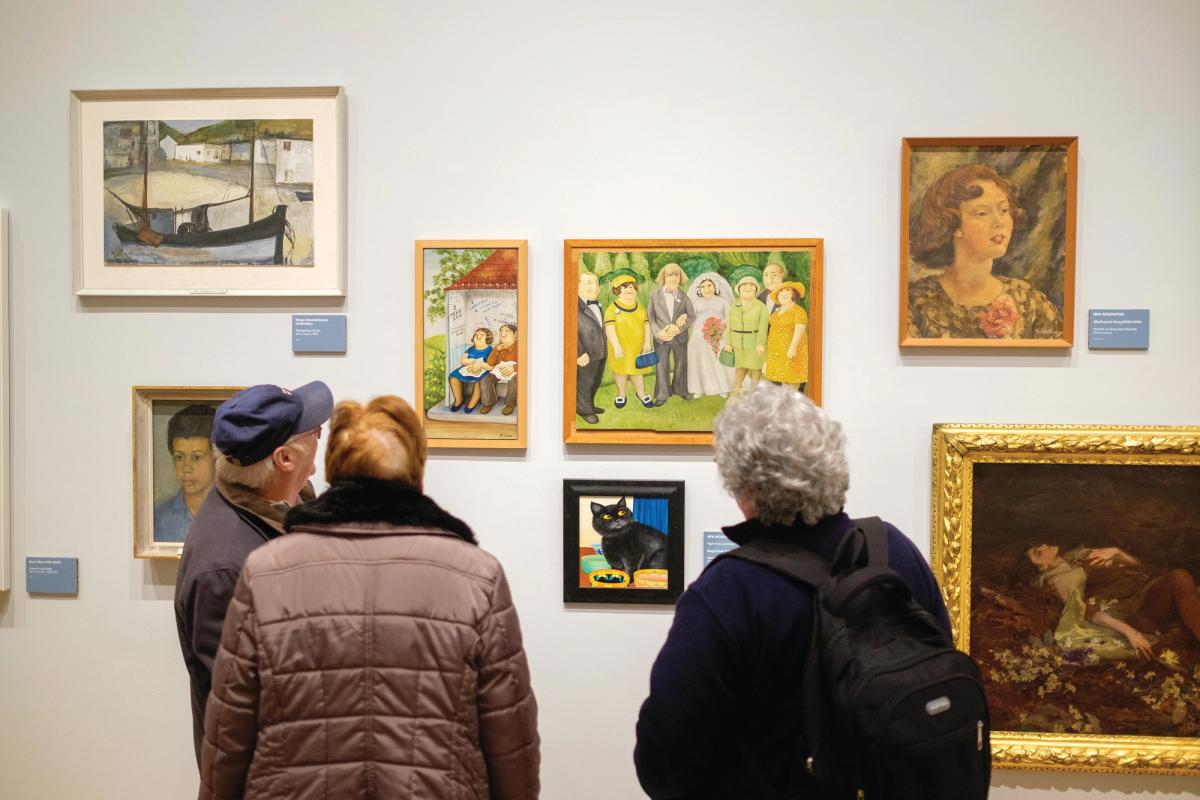When Woking Borough Council in south-east England issued a Section 114 notice in June 2023, cutting funding, the town’s award-winning gallery and museum, the Lightbox was in trouble. The council cited its debts of £1.2bn, forecast to grow to more than £2.6bn. Government-appointed commissioners halted all non-statutory expenditure, and the £284,000 the council had allocated to the museum for 2024-25 was off the table.
“That is about a third of our income,” says the museum’s director Sarah Brown. Losing it meant no longer being able to light or heat the building, let alone staff it. Covid-19 and the subsequent cost-of-living and fuel crises have compounded a decade of austerity cuts. Local government funding, across the UK, is in crisis. Eight of England’s 318 councils have effectively declared bankruptcy since 2018. The UK parliamentary select committee on financial distress in local authorities heard in late 2023 that as many as 50% of the remainder could follow.
Paul Sapwell, the chief executive of Hampshire Cultural Trust, says that, while this is an existential crisis for civic museums, “the crisis is bigger than us. Nothing is affordable on current levels of public funding. And that’s not going to change in the next ten years, whoever is in power. There is more burden than there is money. So we have to do something differently ourselves as well.”
Crisis response
Central government funding for local authorities in England reduced by 40% in real terms between 2009-10 and 2019-20. A recent Arts Council England (ACE) report shows that between 2009-10 and 2022-23, total local authority expenditure on museums and galleries in England decreased by almost as much: 36.7% in real terms, from £286.45m to £241.01m.
In Scotland, that figure stands at 23% and in Wales, 31%. There are no figures for Northern Irish local authority investment in civic museums, which Jenny Waldman, the director of the Art Fund, says is partly due to councils largely not having the capacity to implement their cultural strategies.
Some councils are cutting civic museums funding entirely: Suffolk County Council is stopping all core funding for nine arts and heritage organisations after 2024-25. It proposes to replace this, from 2025, with a project-focused fund of £500,000 to which local arts organisations could apply.
Cutting council funding for civic museums is not just counterproductive—it sets in motion a spiral of decline
In Woking, meanwhile, Sarah Brown secured emergency funding from the National Lottery Heritage Fund and Surrey County Council. Woking Borough Council announced it was redirecting £130,000 of the £1m in UK Shared Prosperity Fund monies to help the Lightbox establish a new financially independent operating model.
This was also motivated by the fact that the council owns the building, meaning it becomes liable for business rates and other fees, estimated at £170,000, should the Lightbox fold (crucially, Woking Borough Council outlined a package of cuts to local services in response to a debt crisis brought about by a failed investment deal).
But arts and heritage professionals agree that cutting council funding for civic museums is not just counterproductive—it sets in motion what Waldman describes as “a spiral of decline”.
In 2023, the English Civic Museums Network identified how these institutions might adapt. Spokesman Jon Finch says simply saying museums need more money is “an unrealistic ask”.
The network highlights several key issues beyond funding, including governance and workforce remuneration and wellbeing. It also underlines how much museums contribute to boosting public health and wellbeing, nurturing skills and community empowerment. As the head of culture and visitor economy at Barnsley Metropolitan Borough Council, Finch works closely with the council’s public health team, among other parties.
Long-term planning
Experts concur that museums should be centred in economic growth plans. Waldman cites The Box in Plymouth, which comprises a museum, a gallery and an archive, as eliciting “ten-year investment from the Arts Council England, £10m in funding, with external funding of £40m coming into the city”.
Barnsley did not have a museum until the council created one, in concert with local residents from neighbouring villages and former mining areas. “It’s now a much-loved institution and a much-used space,” says Sharon Heal, the director of the UK Museums Association. “And I can come up with examples from anywhere in the UK.” Over the past two decades museums have already “upped their game”, she says, in generating earned income and reducing dependency on public funds.
A better governance model
In 2014, Hampshire County Council transferred its museum services to Hampshire Cultural Trust. Of the 24 institutions this independent charity now oversees across eight local authorities, 17 are museums.
Faced with a deficit of £132m, Hampshire council is currently consulting on plans to cut the trust’s annual grant by £600,000 by 2027. Paul Sapwell has also agreed to take on Winchester’s Great Hall, to which is attached a proposed cut of £400,000. This puts the trust on the line for £1m, should what he calls the trust’s “really, really bold” business plan fail.
Since 2014, the trust has doubled its earned income while sustaining a 50% reduction in real-terms council funding. It will now have to double its income again. Failing that, four museums are at risk of closure. Nonetheless, Sapwell believes the trust’s model is “a solution for the civic crisis”. It proffers a resilient governance structure, eschews the cumbersome regulatory bureaucracy and operates like a business.
For Sapwell, the impediment to this model being deployed more widely is politics. Experts point out that decision-making at national level, too, is ideologically driven. This matters in an expected election year. Heal wants to see a robust government strategy, where hard data shapes realistic solutions, devised at national level. Without one, managed decline, and museal attrition, could transpire.


